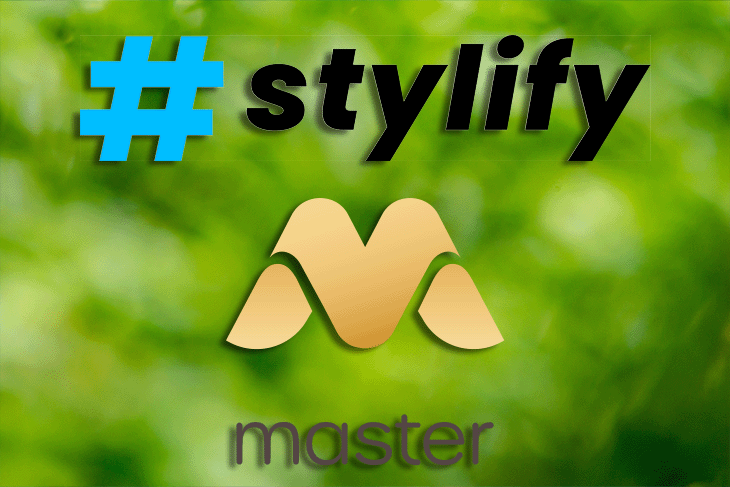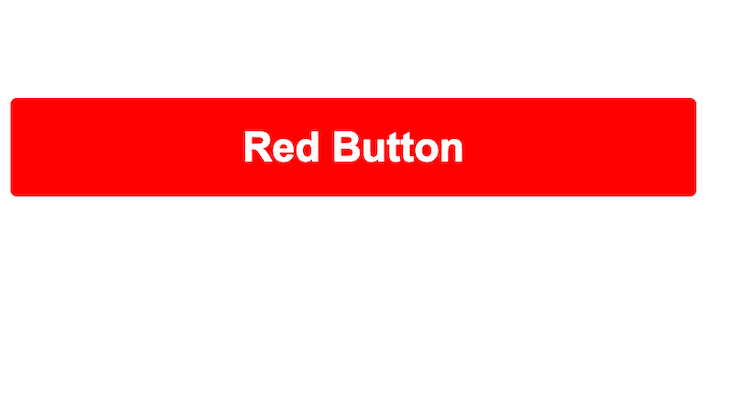
CSS is a declarative and global language for styling web pages. When it depends on HTML, it needs to change whenever the HTML changes, making it difficult to maintain at scale.

This problem was solved a long time ago with the concept of object-oriented CSS, which gave birth to component CSS with many libraries such as Bootstrap and Bulma, while also introducing reusability.
The kind of reusability that comes with component-based frameworks is limited, and from this sprang up utility-first frameworks such as Tailwind CSS.
In this article, we will compare two utility-first CSS libraries — Stylify and Mater Styles; with which you can build unique and responsive UI, while writing less code.
We’ll also discuss the developer experience they both provide and the kind of projects they are well suited for.
The Replay is a weekly newsletter for dev and engineering leaders.
Delivered once a week, it's your curated guide to the most important conversations around frontend dev, emerging AI tools, and the state of modern software.
Component-based libraries come with a set of prebuilt components and semantic classes that do not tell you what the HTML element should look like, but rather tell you what it is.
The problem with component-based libraries is that the CSS breaks whenever the HTML is changed. This problem is solved using utility-first libraries.
A utility-first library provides you with helper classes to build custom complex styles within HTML tags. These classes are single-purpose, easily customizable, and style-oriented to give insight into the HTML element.
Stylify is a lightweight (20KB) CSS library that generates utility-first CSS dynamically based on the HTML you write.
It comes with a Native Preset that uses native CSS property value as selectors and can match nearly all CSS properties from multiple browsers. With Stylify, CSS can be generated for each file, component, page, or layout separately.
Stylify offers you the option of combining screens using logical operators like && (and) and || (or), as well as a special syntax, i.e., __ (double underscores) to represent spaces and ^ (carret) to represent quotes.
This allows you to write selectors like:
<p class="
margin:0__auto
font-family:^Roboto__Mono^,__monospace
">
Hello World!
</p>
The code above will be minified and generate the following CSS:
._nmed{
margin:0 auto
}
._l4hja{
font-family:'Roboto Mono', sans-serif
}
To use the default configuration build through CDN, copy the following code and place it in your HTML file:
<script src="https://unpkg.com/@stylify/[email protected]/dist/stylify.native.min.js"></script>
You can also install Stylify through the CLI using a package manager like npm or Yarn:
// for npm
npm i -D @stylify/stylify
// for yarn
yarn add -D @stylify/stylify
Refer to this list of guides to learn how to integrate Stylify with tools such as Laravel, Next.js, etc.
Additionally, refer to this guide to learn how to integrate Stylify into an existing project. Stylify also ships with multiple packages which can be installed using npm or Yarn.
Master Styles is not just a framework or a library; it’s also an ecosystem that includes utilities for building user interfaces.
Its concept is based on design reusability, virtual CSS with enhanced syntax, and dynamic assignments. It offers over 172 styles out-the-box with zero configuration needed.
The syntax of Master is entirely different from other utility-first CSS libraries and is very close to native CSS.
Master Styles offers a systematic CSS syntax and provides shorthand, acronym, and symbol syntax to speed up and reduce the lines of code.
Here are three ways to write a simple paragraph that is aligned to the center of a page with a font size of 32px (pixels) and a background color of green in Master Styles:
<p class="text-align:center font-size:2rem background-color:green-50"></p>
Using a property shorthand will reduce the lines of code:
<p class="text:center font:32 background:green-50"></p>
Using acronyms will reduce the code even more:
<p class="t:center f:32 bg:green-50"></p>
You can install Master Styles using a package manager. To install Master Styles, copy the code of your preferred package manager:
// using npm
npm install @master/styles @master/normal.css
// using yarn
yarn add @master/styles @master/style @master/normal.css
// using pnpm
pnpm install @master/styles @master/style @master/normal.css
The next step is to import @master/styles from node_modules into your JavaScript entry file:
import '@master/styles';
Then proceed to import @master/normal.css from node_modules into your CSS entry file:
import '@master/normal.css.'
Refer to this guide to learn how to integrate Master Styles into different frameworks.
Now, let’s compare the Stylify and Master Styles libraries in terms of ease of use, performance, developer experience, components, and the process for creating a sample button using each library.
Both frameworks are easy to set up and use, and they both have a small learning curve and are easy to get started with — especially if you’re already familiar with utility-first CSS frameworks like Tailwind.
The ease of use of a library is predominantly based on how intuitive and informative its documentation is.
In this vein, Stylify’s documentation is more descriptive and does better in introducing new users to the library. Master Styles’ documentation, on the other hand, is a little more complicated than Stylify’s documentation and will take more time for first-timers to get started.
Performance and speed are crucial factors when picking a framework. However, size is an essential factor contributing to a framework’s performance, as, the smaller its size, the faster the framework.
Although both libraries are lightweight, Master Styles (13KB) is a little smaller than Stylify (28KB); and faster than Stylify.
In addition, Master Styles offers a hybrid architecture that allows you to pre-generate CSS from HTML on the server-side and then use JIT on the client-side by reverse parsing, which gives you runtime flexibility and improved page load speed.
They both offer great syntax to reduce lines of code and utility classes to help customize UIs.
Developer experience is another crucial factor in choosing a framework — both libraries are framework-agnostic.
Stylify provides seamless integration into frameworks like Next.js, Nuxt.js, Laravel, Symfony, etc. It also works well with Webpack and Rollup.js. It is simple to integrate Stylify into an existing project.
Master Styles also offers integration into frameworks like React, Next.js, Angular, Nuxt.js, and Laravel. Unlike most CSS libraries, Master runs in real-time in the browser.
Stylify offers you the option to create components and reuse them wherever required. This follows the DRY principle (don’t repeat yourself) to help reduce the hassle of rewriting the same lines of code. It also allows you to mix components with utility selectors.
At the time of writing, Master Styles doesn’t support the use of components. You’ll have to repeatedly rewrite the same lines of code whenever needed.
However, it offers intuitive shorthand that allows you to reduce the lines of code by using acronyms.
Here is how to create a simple red button in Stylify:
<button class="font-weight:bold font-size:24px border-radius:4px padding:15px width:400px margin:50px__auto__0__auto text-align:center background:red color:white">Red Button</button>

Here is an example of how to create a blue button in Master Styles:
<button class="font-size:24px border-radius:4px padding:15px width:400px margin:50px;auto;0;50px text-align:center color:white bg:blue-60 ">Blue Button</button>

Both frameworks follow similar patterns in creating an excellent UI with a few fundamental differences. They both have some things in common, such as:
The choice is relatively easy — use Stylify for larger projects and Master Styles for image-heavy websites and webpages that require several or demanding animations.
In larger projects, more components will be reused, meaning that the CSS will grow slowly, which will result in a faster page load. This makes Stylify an optimal choice for larger projects.
Master Styles, on the other hand, offers symbols like “@” (animation) and “~” (transition) that provide full functionality and make animating elements easier.
It also provides a set of commonly used keyframes (for spirits) to bring features to life and allows you to create custom keyframes. This makes Master Styles a better choice for intense animation web pages.
This article compares two underdog CSS frameworks dubbed the next generation of Tailwind-like CSS utility libraries — Stylify and Master Styles. We compared both frameworks based on performance, learning curve, similarities, and other factors.
Although both frameworks are similar, Stylify offers the use of components which makes it more dynamic than most utility-first CSS libraries. It is great for bigger projects, while Master Styles on the other hand is an optimal choice for animated webpages.
Whether Stylify or Master Styles is a better CSS library depends on the developer’s use case. Although both libraries are new, the experience using both frameworks is excellent, and I would encourage you to check out their docs to get started.
As web frontends get increasingly complex, resource-greedy features demand more and more from the browser. If you’re interested in monitoring and tracking client-side CPU usage, memory usage, and more for all of your users in production, try LogRocket.

LogRocket lets you replay user sessions, eliminating guesswork around why bugs happen by showing exactly what users experienced. It captures console logs, errors, network requests, and pixel-perfect DOM recordings — compatible with all frameworks.
LogRocket's Galileo AI watches sessions for you, instantly identifying and explaining user struggles with automated monitoring of your entire product experience.
Modernize how you debug web and mobile apps — start monitoring for free.

Container queries let components respond to their own layout context instead of the viewport. This article explores how they work and where they fit alongside media queries.

React Server Components vs Islands Architecture: Learn how each reduces client JavaScript, impacts hydration and interactivity, and which trade-offs matter for production performance.

Large hosted LLMs aren’t always an option. Learn how to build agentic AI with small, local models that preserve privacy and scale.

What storylines defined 2025 in frontend development? We power rank them all, from AI advancements to supply chain attacks and framework breakthroughs.
Would you be interested in joining LogRocket's developer community?
Join LogRocket’s Content Advisory Board. You’ll help inform the type of content we create and get access to exclusive meetups, social accreditation, and swag.
Sign up now
3 Replies to "Stylify vs. Master Styles: Comparing Tailwind-like CSS utility libraries"
Hi Ikeh,
thank you a lot for such article!
It’s an amazing comparison!
One thing only. Stylify latest version is `0.0.16`. So for the unpkg is better to use the “latest” or the 0.0.16 version. To keep the versions updated.
Thank you once again for taking the time to study Stylify! ❤️
Hi Ikeh,
could you please update the stylify domain?
We have migrated the web to https://stylifycss.com
Best,
Stylify team.
Hi Stylify team,
I’ve updated the links. Thanks for reading!